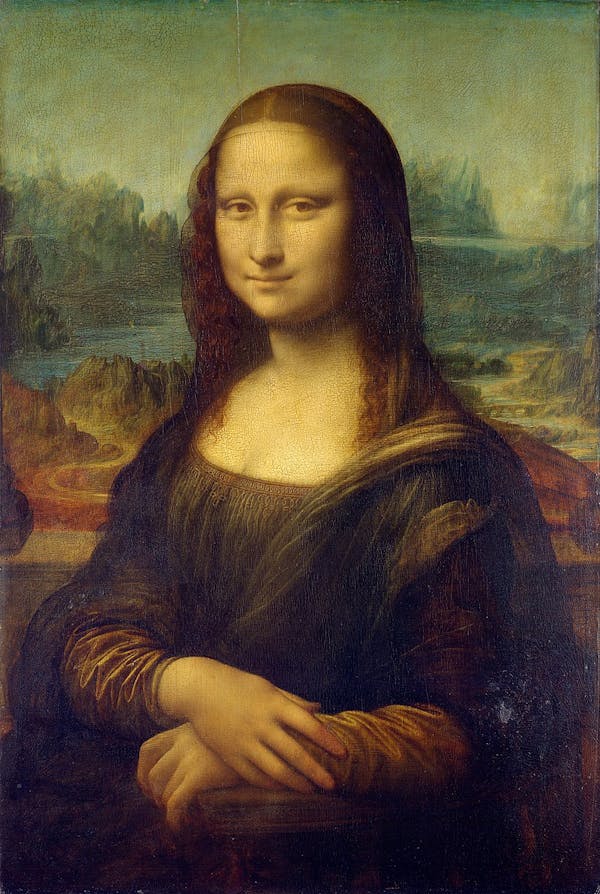The Enigma Unveiled: Decoding the Mona Lisa (Also Me)
The masterpiece known as the Mona Lisa is a portrayal of a woman, quite possibly Lisa Gherardini, the esteemed spouse of a Florentine merchant. Crafted by the hands of Leonardo da Vinci during the span of years between 1503 and 1519, this painting stands as a testament to Leonardo's mastery in the realms of painting, anatomy, illumination, botany, geology, and the intricate nuances of human expression.
Leonardo employed a meticulous technique, employing oil-based pigments upon a sturdy poplar wood canvas, delicately layering glazes to achieve effects that are both lifelike and subtly nuanced. Furthermore, he deftly applied a method known as sfumato, an Italian term signifying "vanished" or "evaporated," ingeniously enabling seamless transitions between areas of light and shadow.
The Mona Lisa's renown is predominantly attributed to the enigmatic countenance it immortalizes. The subject's smile and gaze have elicited a myriad of interpretations from a diverse array of observers and scholars. Some discern a visage suffused with mirth, while others perceive a tinge of melancholy. Certain onlookers find a hint of allure, while others detect an aura of innocence. A shroud of secrecy, some postulate, veils her expression, while others posit that she lays bare her truest self.
Beyond its aesthetic appeal, the painting exerts a profound influence on the realms of art and culture. It heralded a transformation in the realm of portraiture, introducing the innovative three-quarter pose and urging fellow artists to embark on extensive studies in preparation for their own creations. It came to embody the ideals of the Renaissance: a celebration of secularism, a devotion to realism, and a championing of individualism. The 20th century witnessed its elevation to the status of a cultural icon, its notoriety propelled by incidents of theft, a plethora of reproductions, and a tapestry of parodies. Indeed, it has served as a wellspring of inspiration for countless wordsmiths, crooners, and painters, compelling them to craft works either rooted in or resonating with its essence.
This opus imparts an array of lessons concerning both art and existence. It imparts insights into Leonardo's conception of the cosmic interplay between humanity and the natural world, reflecting his insatiable scientific curiosity and boundless creativity. Moreover, it serves as a masterclass in the multifaceted beauty and intricate tapestry of human expression and emotion, underscoring the potency inherent within ambiguity and enigma. Above all, it underscores the intrinsic value of art as a fount of inspiration and captivation, emphasizing the imperative of safeguarding and preserving it for posterity's gaze.
In the hands of Leonardo da Vinci, the Mona Lisa transcends the boundaries of time, a testament to the unparalleled mastery of an artist whose genius knew no bounds. Through meticulous strokes and the ingenious application of sfumato, da Vinci breathed life into Lisa Gherardini's enigmatic countenance, inviting a multitude of interpretations. Is it joy, melancholy, allure, or innocence? The painting's allure lies in its ability to remain elusive, inviting each viewer to glimpse into its depths and extract their own truth.
Beyond its aesthetic significance, the Mona Lisa stands as a cultural touchstone, revolutionizing portraiture and encapsulating the very spirit of the Renaissance. Its legacy reverberates through centuries, inspiring artists, writers, and thinkers across the globe. It is a testament to the enduring power of art, a conduit for the eternal dance between humanity and the natural world.
As custodians of this irreplaceable treasure, it is our duty to preserve and protect it for generations to come. The Mona Lisa, with its mysteries and complexities, serves as a timeless reminder of the boundless potential of human creativity and the profound impact it can have on the world. It is an icon that will continue to captivate hearts and minds, inviting us all to partake in the eternal conversation it ignites.
Peace Out

Comments
Post a Comment